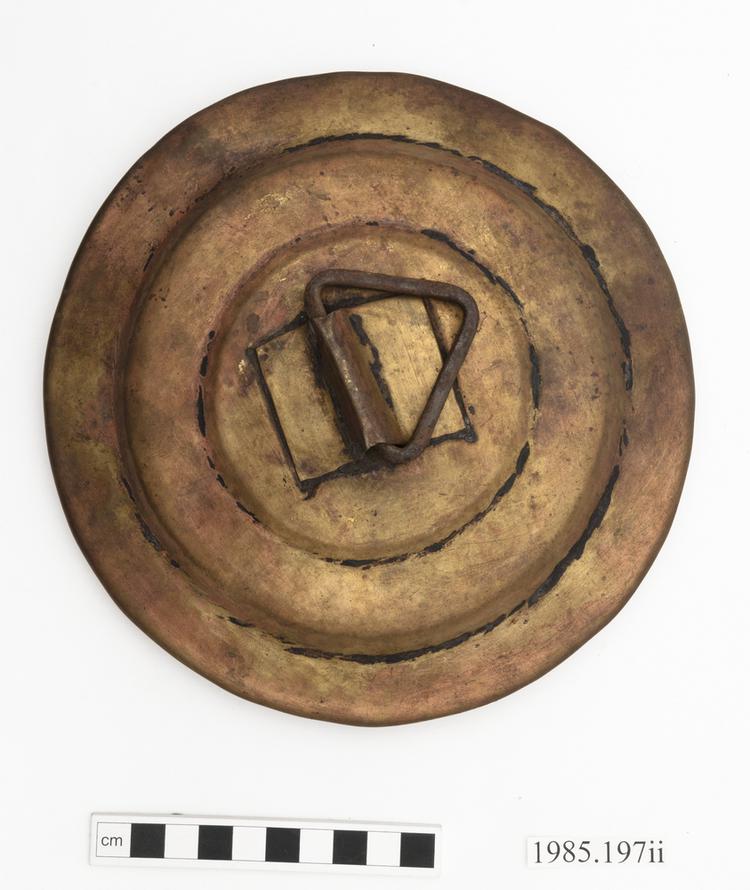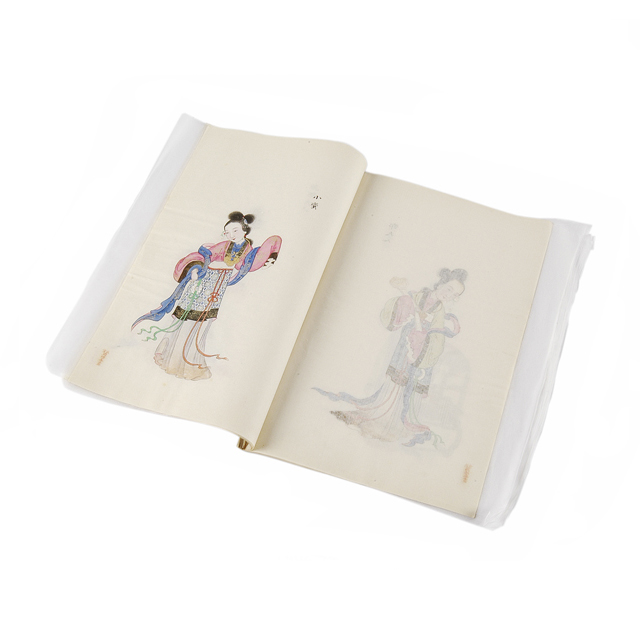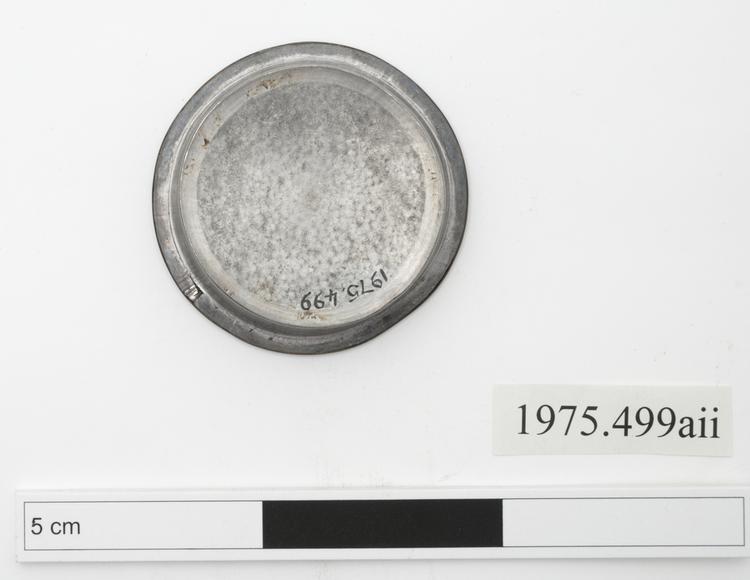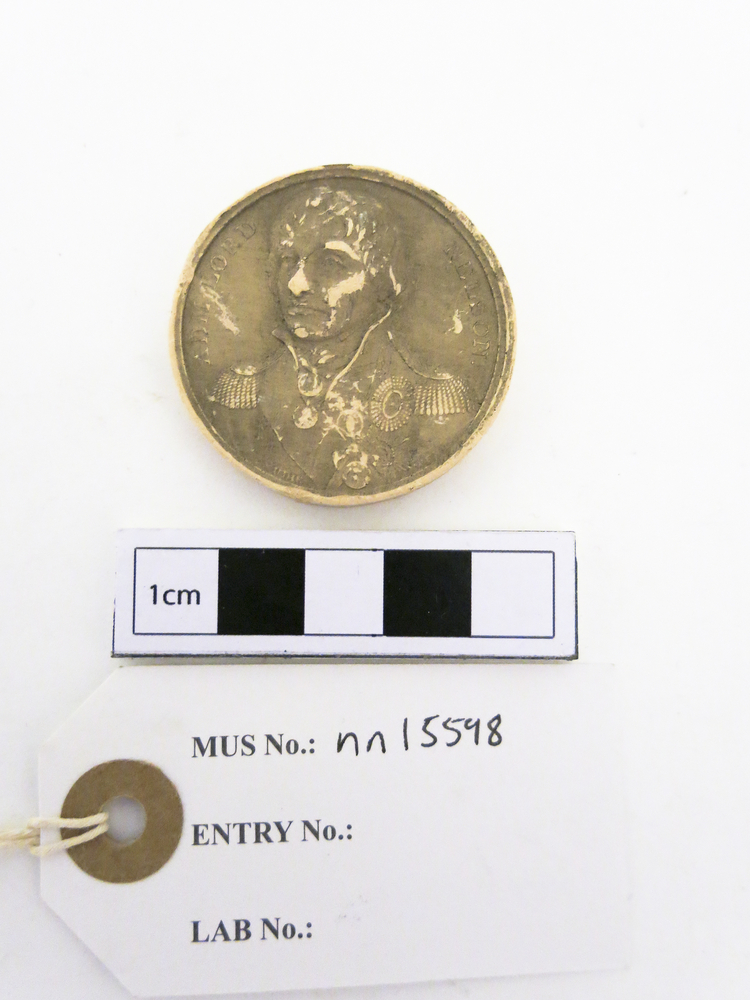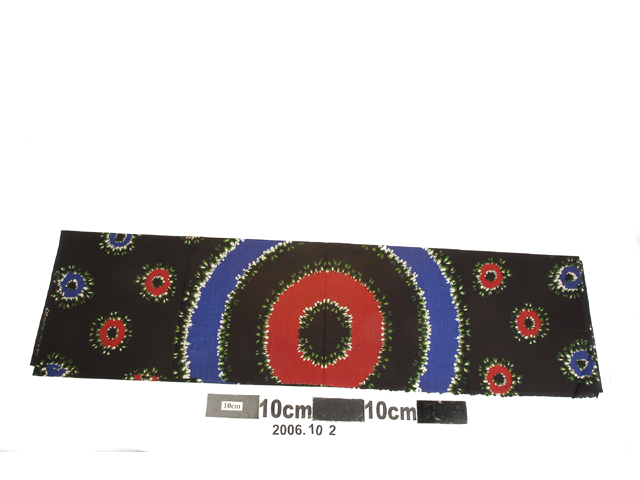
Textile sample, mainly black with blue-green and red-green rosettes and large concentric circles in the same colours.
This looks like a piece of tie-dyed bazin cloth – particularly popular in urban areas, and the process of tie-dyeing can be seen in houses courtyards all over the cities/ towns. The use of chemical dyes started from the 1950s in Mali and are applied to imported white cotton cloths (imported from Germany, China, Holland etc. Their popularity means that they have come to replace the more ‘traditional’ woven textiles with natural dyes. This particular piece has been dyed using the technique ‘du neuillage’ (knots) – after a first dye, a section of the textile is wrapped up, tied together with string whilst being placed in a new basin of dye, to be removed, dried and then the string is untied, leaving the original colour.



